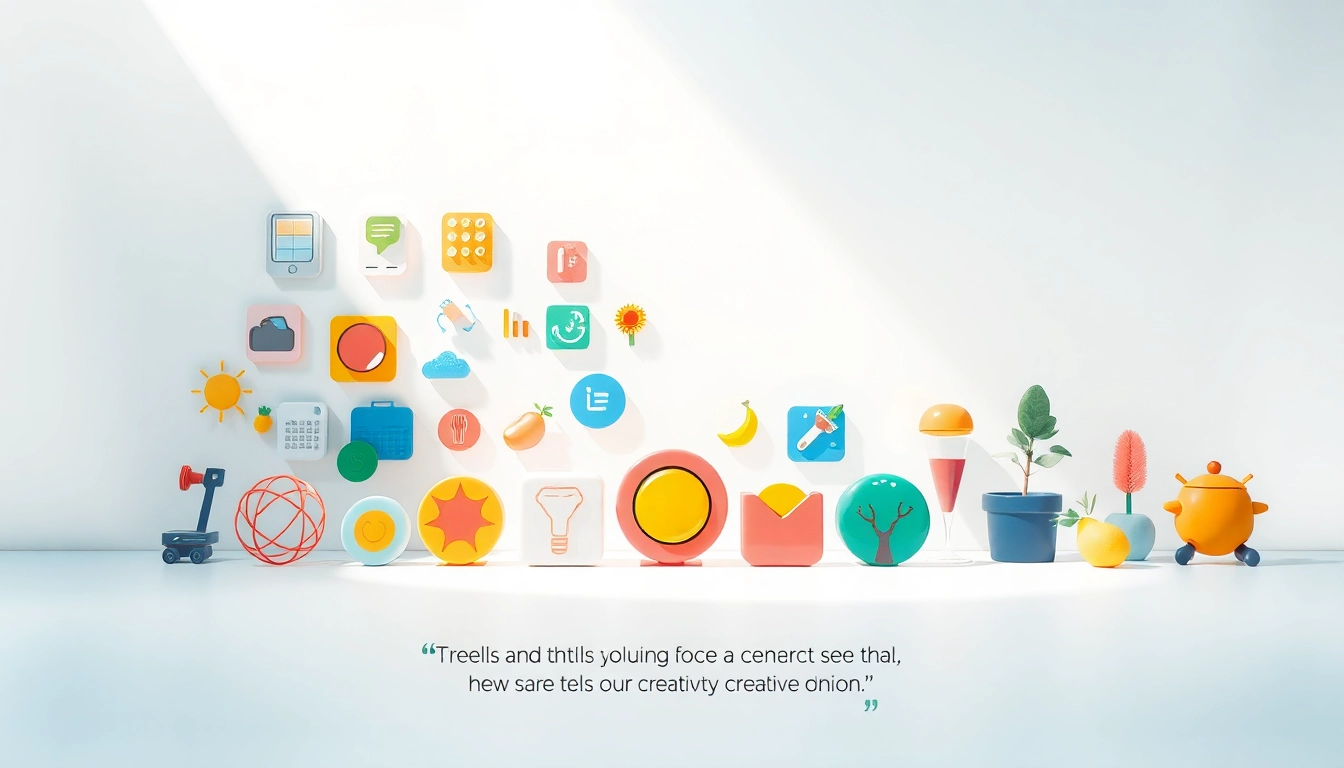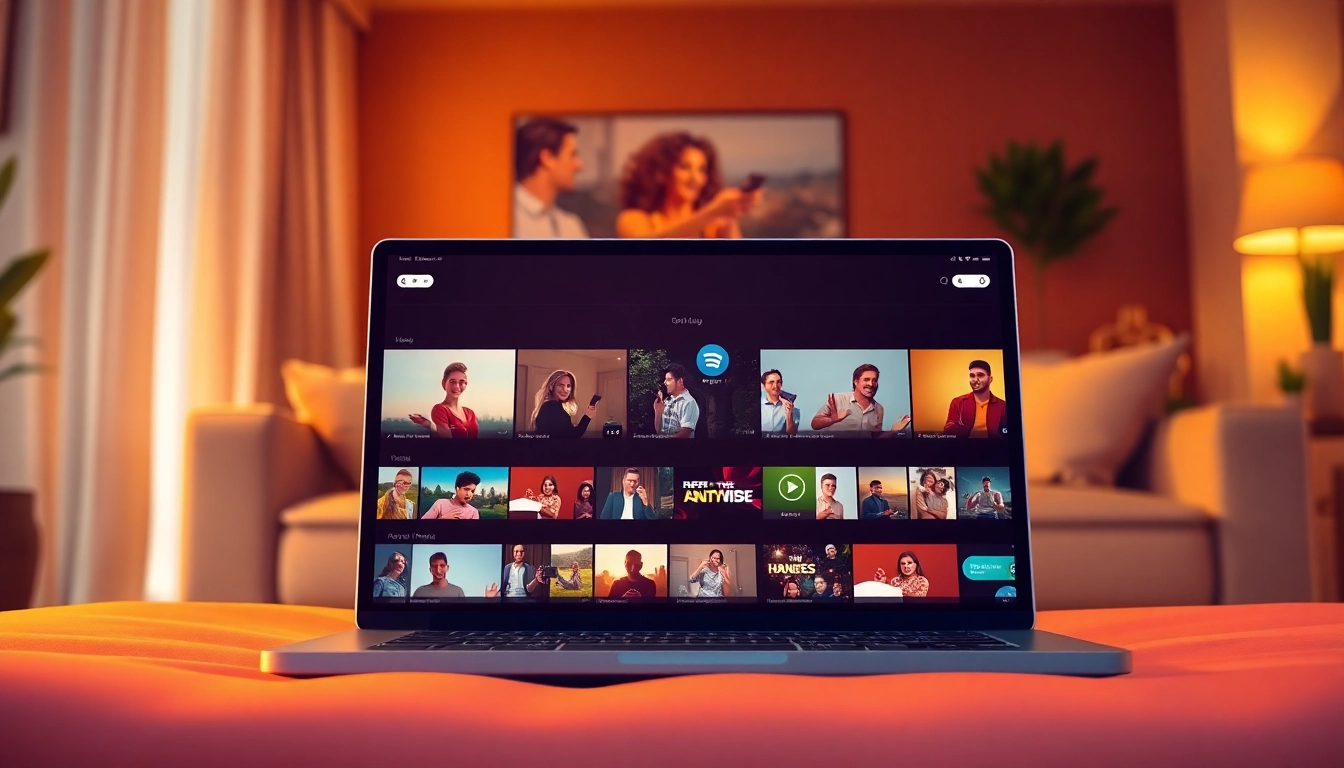Understanding Icons: Definition and Importance
Icons are small graphical representations that symbolize different actions, concepts, or processes in a digital landscape. These graphics have evolved significantly over time, transitioning from mere decorative elements to essential components of user experience (UX) design. With the rise of visual communication in our digital age, icons play a pivotal role in conveying meaning swiftly and enhancing interface usability. This article explores the significance of icons, their historical development, and the benefits they offer in modern design practice.
What are Icons?
At its core, an icon can be defined as a pictorial representation serving as a symbol for something else. In computing, this often translates into visual symbols found within user interfaces that facilitate actions, guide navigation, and enhance aesthetic appeal. Icons can vary in size, style, and form, adopting characteristics like simplicity and recognizability, which make them effective tools for communication within any digital environment.
Historical Context of Icon Design
The history of iconography dates back to ancient civilizations, where symbols and images held profound significance. The early examples of icon usage can be seen in religious and cultural contexts, often used to convey complex ideas or beliefs in a digestible format. This notion of visual representation has evolved over the centuries, making its way into the digital age with the advent of computer interfaces in the 20th century. Icons began to appear in operating systems, like Apple’s Macintosh and Microsoft Windows, making technology more accessible to a broader audience.
Benefits of Using Icons in Digital Media
In the realm of digital media, the integration of icons offers several advantages:
- Enhanced Usability: Icons make navigation intuitive, allowing users to comprehend functionalities at a glance.
- Improved Communication: Visual symbols cross language barriers, facilitating communication in multicultural environments.
- Space Efficiency: Icons occupy less space than text, allowing for cleaner, more organized layouts.
- Consistent Branding: Custom icons can reinforce brand identity, providing a unique touch that distinguishes a brand in a crowded market.
- Engagement Boost: Well-designed icons can capture user attention, encouraging interaction and improving overall engagement.
Types of Icons and Their Functions
Icons come in various styles and functions, each serving specific purposes across different platforms and applications. Below, we delve into the diverse types of icons, emphasizing their importance in enhancing user experiences.
Diverse Styles: Flat, Outline, and 3D Icons
Icon designs can be categorized into several styles. Understanding these can help in choosing the right icons for a project.
- Flat Icons: With minimalistic design and bold colors, flat icons focus on clarity and simplicity without three-dimensional effects.
- Outline Icons: Often characterized by their crisp lines and open shapes, outline icons convey messages in a subtle yet stylish manner, making them versatile for various applications.
- 3D Icons: Providing depth and realism, 3D icons enhance visual interest and can be effective in gaming or virtual reality applications, though they might require more processing power.
Role of Icons in User Interfaces
Icons serve as visual cues within user interfaces, guiding users through tasks and enhancing the overall UX. Icons for home, search, settings, and notifications are ubiquitous across platforms. The strategic placement and design of these icons can significantly impact how users interact with a system. For instance, a well-placed ‘home’ icon allows users to easily return to the main page, streamlining navigation and reducing frustration.
Social Media Icons and Their Impact
In the social media landscape, icons serve as direct links to platforms, allowing users to share content swiftly. The iconic branding of platforms like Facebook, Twitter, and Instagram enables users to identify and associate with them instantly. This visual recognition helps in building brand loyalty and community engagement, driving users’ actions in a seamless manner.
Choosing the Right Icons for Your Project
Selecting appropriate icons requires careful consideration of several factors that can influence user interaction and brand perception. Below are key elements to guide this selection process.
Understanding Audience Preferences
Knowing the target audience is crucial when choosing icons. Different demographics have varying tastes and preferences. Conducting thorough research can provide insights into what design styles resonate with your audience, ensuring that the icons chosen align with user expectations and cultural contexts. For example, younger audiences may prefer modern, playful icons, while professional users might gravitate toward minimalist and straightforward designs.
Color Psychology in Icon Design
Colors evoke emotions and convey messages. Therefore, understanding color psychology is essential in icon design. For instance, blue often represents trust and security, making it a popular choice for financial applications. In contrast, red can signify urgency, commonly used in warning alerts. Selecting colors that complement both the brand and the desired emotional response can enhance the effectiveness of icons.
Customizing Icons to Fit Brand Identity
Custom icons allow businesses to communicate their unique brand identity effectively. This includes designing icons that reflect the company’s values, mission, and visual style. A cohesive set of icons contributes to a uniform brand aesthetic across all digital platforms, reinforcing recognition and fostering user trust.
Designing Your Own Icons: Tips and Tools
If existing icons do not meet specific project needs, designing custom icons may be the solution. Below are insights into the tools and practices that can aid in creating effective icons.
Popular Software for Icon Creation
There are numerous tools available for designing icons, each catering to different skill levels and needs:
- Adobe Illustrator: A professional-grade design tool favored by graphic designers for its robust features and versatility.
- Sketch: A Mac-based design platform optimized for user interface design, making it ideal for icon creation.
- Inkscape: An open-source alternative to commercial software, offering powerful vector graphic editing capabilities.
- Canva: A user-friendly design platform that provides templates, making it accessible for beginners to create visually appealing icons.
Best Practices for Icon Design
To develop effective icons, several best practices should be followed:
- Simplicity: Icons should be simple and recognizable. Avoid intricate designs that may cause confusion.
- Scalability: Ensure icons maintain clarity at various sizes; they should be legible on both mobile and desktop platforms.
- Consistency: Icons within a project should share a common style and color scheme to create a unified look.
- Testing: Conduct user testing to gather feedback on icon effectiveness and make adjustments where necessary.
Leveraging Templates vs. Custom Designs
When considering icon design, you may choose between templates and custom designs. Templates can serve as a great starting point, providing a foundation without the need for design experience. However, custom designs ensure that icons align perfectly with brand identity and project goals. Balancing the use of templates with personalization will yield the best results.
Measuring the Impact of Icons on User Engagement
To assess the effectiveness and engagement level driven by icons, businesses must employ analytics and testing methods. Here’s how to measure their impact:
Analytics Tools to Track Icon Performance
Utilizing various analytics tools helps to understand how users interact with icons:
- Google Analytics: Track user behavior on your site, offering insights into how often icons are clicked or ignored.
- Heatmaps: Tools like Hotjar or Crazy Egg can visualize where users hover and click, giving feedback on icon effectiveness.
- A/B Testing: Conduct testing between different icon designs to determine which versions lead to higher user engagement rates.
Case Studies: Icons That Boosted Engagement
Real-world examples can illuminate the impact of icons on engagement. For instance, a popular e-commerce website redesigned its cart icon from a generic box to a more stylized, recognizable shopping cart, resulting in a 15% increase in cart addition rates. Such case studies underline the importance of thoughtful icon design in driving user interaction.
Future Trends in Iconography
The future of iconography is bright, with trends evolving to meet user needs and technological advancements. Some of the expected trends include:
- Adaptive Icons: Icons that adjust dynamically based on user preferences and behaviors.
- Animated Icons: Utilizing subtle animations to draw attention and enhance user interaction.
- Inclusive Design: Designing icons to be more inclusive for varying user abilities, such as through larger touch targets or symbols that communicate non-verbally.
Conclusion
Icons are far more than mere design elements; they are crucial tools that enhance user experience, improve communication, and support brand recognition. Understanding their history, functionality, and best practices provides designers and businesses with a competitive edge. As technology continues to advance, staying updated with trends and user preferences will ensure that icons remain effective and relevant in the evolving digital landscape.














Leave a Reply